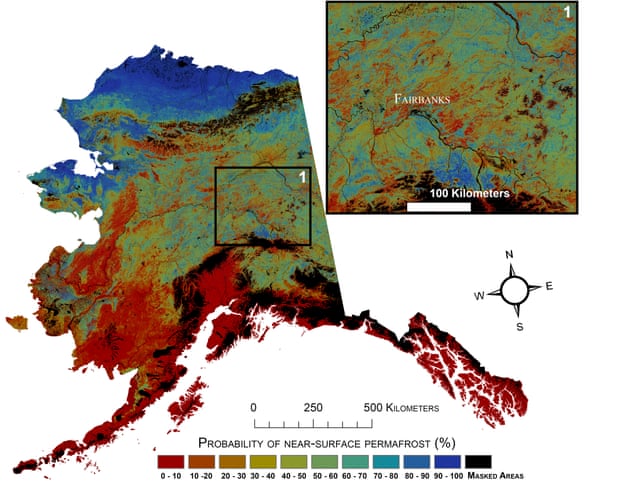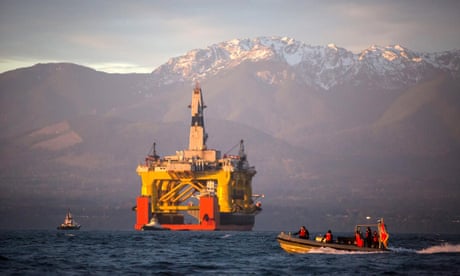The US Geological Survey used satellite and on-ground data to estimate that 38% of mainland Alaska has permafrost, a band of soil, rock or sediment that is frozen underground for at least two consecutive years. In Fairbanks, Alaska, the soil has been frozen for several thousand years at just 30 to 40cm underground, with only the upper level of soil thawing every summer before freezing again in winter.
But this icy mass is now under threat from warming temperatures. Under scenarios calculated by USGS, 16% to 24% of Alaska’s permafrost will disappear by the end of the century under varying climate change outcomes. The declines are expected to be sharper in the heavily forested central areas of Alaska, rather than the state’s north.
“Increasing air temperatures have led to widespread thawing and degradation of permafrost, which in turn has affected ecosystems, socioeconomics, and the carbon cycle of high latitudes,” the USGS study states. “Taken together, these results have obvious implications for potential remobilization of frozen soil carbon pools under warmer temperatures.”
The melting of the permafrost would release carbon stored for many years underground, causing the sort of “feedback loop” that has concerned climate scientists: as warming temperatures melt ice in the Arctic region, carbon and methane that has been locked away for thousands of years is being released, thereby fueling more warming and melting.
Source: The Guardian




